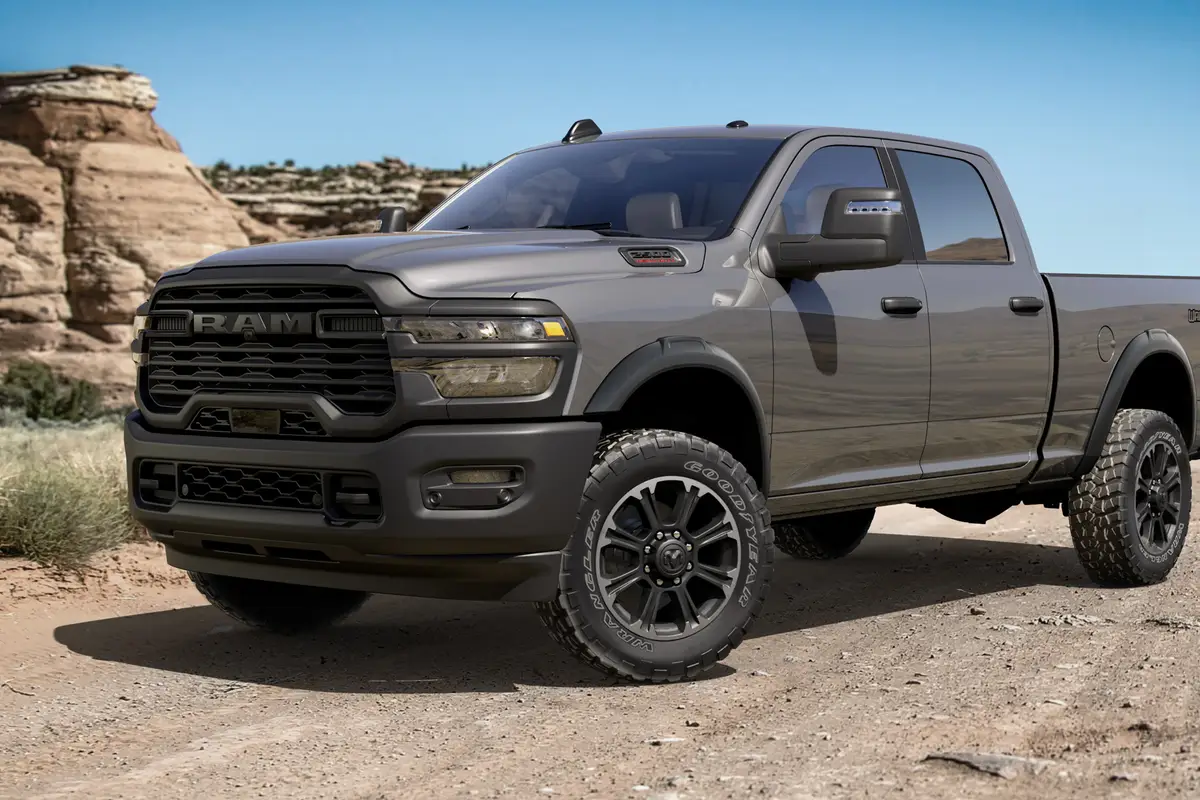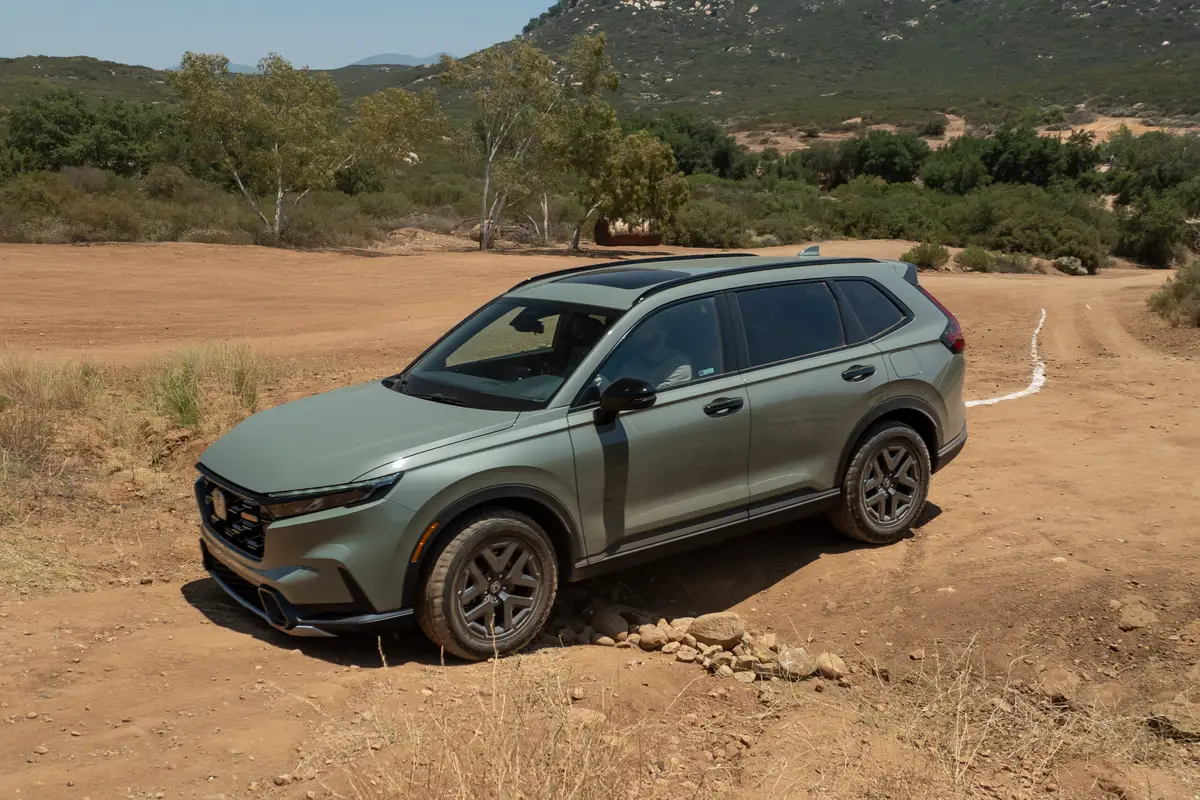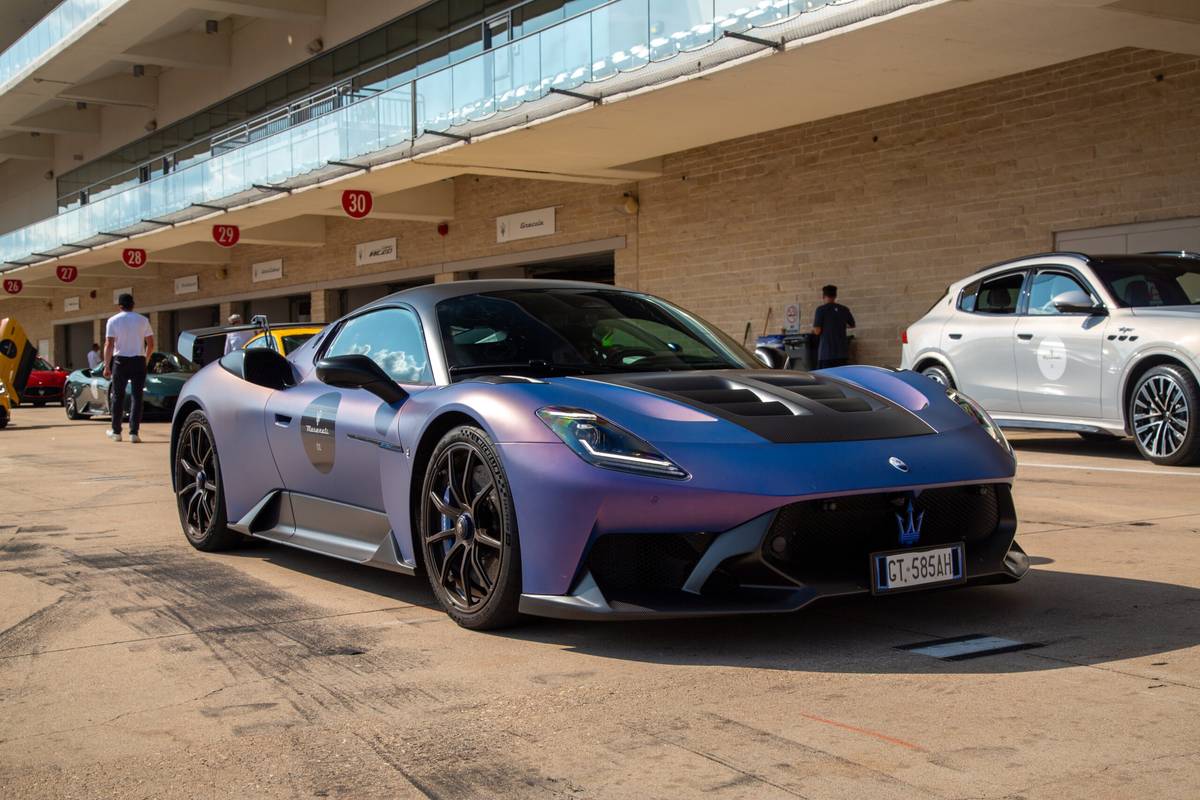chicagotribune.com's view
The Jeep Rubicon is the newest member of the Wrangler family, brought out for ’03 to give the serious off-roader a machine to do battle with whatever you have to battle when carving a path through Ma Nature’s territory.
Jeep calls it the “ultimate off-road rig.” Perhaps “ultimate” is a bit much, especially after having experienced how well a 2003 Hummer H2 maneuvers up inclines, through streams, down hills and over/under/around/out of ruts. But “off-road” is true.
Jeep boasts that its Rubicon Wrangler “allows serious off-road enthusiasts the opportunity to drive over some of the most extreme trails in the country and then drive it home.”
The “drive it home” part is what sets Rubicon apart from your everyday Jeep Wrangler. Rubicon will handle extremes, but, unfortunately, when the pavement appears Rubicon remains in extreme mode.
Not everyone will appreciate this vehicle. Rubicon is meant to help you move in and out of tough spots when off-road, not to cushion your tush when on pavement.
Ride is stiff, which it is meant to be. Handling refers to climbing, clawing and digging into sand, dirt, mud or whatever other gunk or goop you need to grab hold of to keep moving when the pavement disappears, which is when you grab the transfer case lever and engage four-wheel-drive.
Youth, or at least those with strong bladders, will find little reason to fault Rubicon. Older folks, who simply walk in the showroom and buy the Jeep brand without checking out the variety, will be surprised, if not irked.
Its oversized 31-inch radial tires give Rubicon a rugged stance and macho presence. And the tread pattern is designed to wrap around the sidewall to help grab ledges along the trail. But the aggressive tread pattern isn’t designed to ride in harmony with asphalt or concrete. You’ll have to turn the radio up more than a notch to hear over the road noise filtering into the cabin.
So, a lousy vehicle?
Nope.
Jeep says Rubicon is for “enthusiasts who embrace off-roading with incredible zest and for whom premium off-road trails serve as a playground.”
No harm, no foul and no reason folks can’t enjoy the great outdoors. Because we still tolerate those who drive and use cellphones at the same time and since smokers haven’t been tarred and feathered, no reason to discriminate against outdoors enthusiasts.
Jeep estimated that only 8,000 souls who like to carve their own trails would opt for a Rubicon. Yet demand has forced it to double output to 16,000 units–and, of course, several months are left in the model year.
It’s just that, as noted, Rubicon is for those who march to a different drummer, folks who are willing to accept a little harshness to be able to go where most other people, especially those in car-based SUVs, fear to tread because basically they haven’t got the ability to tread.
It won’t travel the same course as a Hummer H2, but then with a base price of $24,38 5, you might be able to put two Rubicons in your garage rather than just one H2.
For ’03 the 2.4-liter 4-cylinder offered in the Jeep Liberty replaces the 2.5-liter 4-cylinder as standard in the Wrangler. The 2.4, rated at 150 horsepower and 165 foot-pounds of torque, delivers 25 percent more h.p. and 18 percent more torque than the 2.5.
But Rubicon offers as standard a 4-liter inline 6-cylinder rated at 190 h.p. and 235 foot-pounds of torque to provide the muscle you need to challenge the trails.
A new 4-speed automatic replaces the former 3-speed automatic in all Wranglers.
Four-wheel disc brakes are standard in the Rubicon, but you can’t get anti-lock brakes, which are offered as an option in all but the SE Wrangler.
The wheelbase is only 93.4 inches, and the shorter the wheelbase, the closer you are to the point of contact underneath. While driver and front-seat passenger are somewhat removed from the contact points, those who sit in the back seat are directly over the rear axle.
And when decorative and off-road functional 31-inch tires are combined with a short wheelbase, you have to accept that taking a turn at 65 m.p.h. isn’t the wisest thing to do.
You have to accept the basics in a Jeep. No power door locks and no power windows, because the doors are removable so the power systems can’t be incorporated in the panels. That means no side air bags, either.
Ironic, don’t you think, that while a group of folks are concerned about sport-ute rollovers and being tossed out the open windows, you can travel in a sport-ute without doors, much less windows.
Ironic, too, that if you remove the doors, you must equip your Wrangler with an adapter to attach outside mirrors.
New items worth noting for ’03 are a fold-and-tumble and more easily removable rear seat, an added 20 millimeters of front-seat travel so taller drivers can move farther from the steering wheel and taller seatbacks for those taller drivers and their passengers as well as those short ones.
While the base price was $24,385, Rubicon came with so many high-priced options–$825 for automatic, $895 for air, $920 for solid black hardtop rather than the standard soft top–that the final sticker wasn’t that far from $30,000.
If your buying decision is based primarily on whether a vehicle is off-road worthy, the $30,000 shouldn’t be that troublesome.
Though not quite as rugged as that Hummer, Rubicon should go anywhere you choose to take it.
If you don’t use off-road trails as a playground, the $30,000 should give you cause to ponder all the other choices for that sum.
Wranglers, primarily used ones, are high on the list of vehicle choices among youth. Parents might want to make a mental note that when the kid starts lobbying for a used Wrangler as an everyday commuter, your first question might be whether it is a Rubicon.
Jeep says Wrangler is popular as the first vehicle purchase among college grads or the first option rather than getting a motorcycle among older buyers.
Demographics show that the median buyer age is 36, household income is $61,000, 53 percent are married and 68 percent are male.
About 70,000 Wranglers are sold annually.
Latest news



